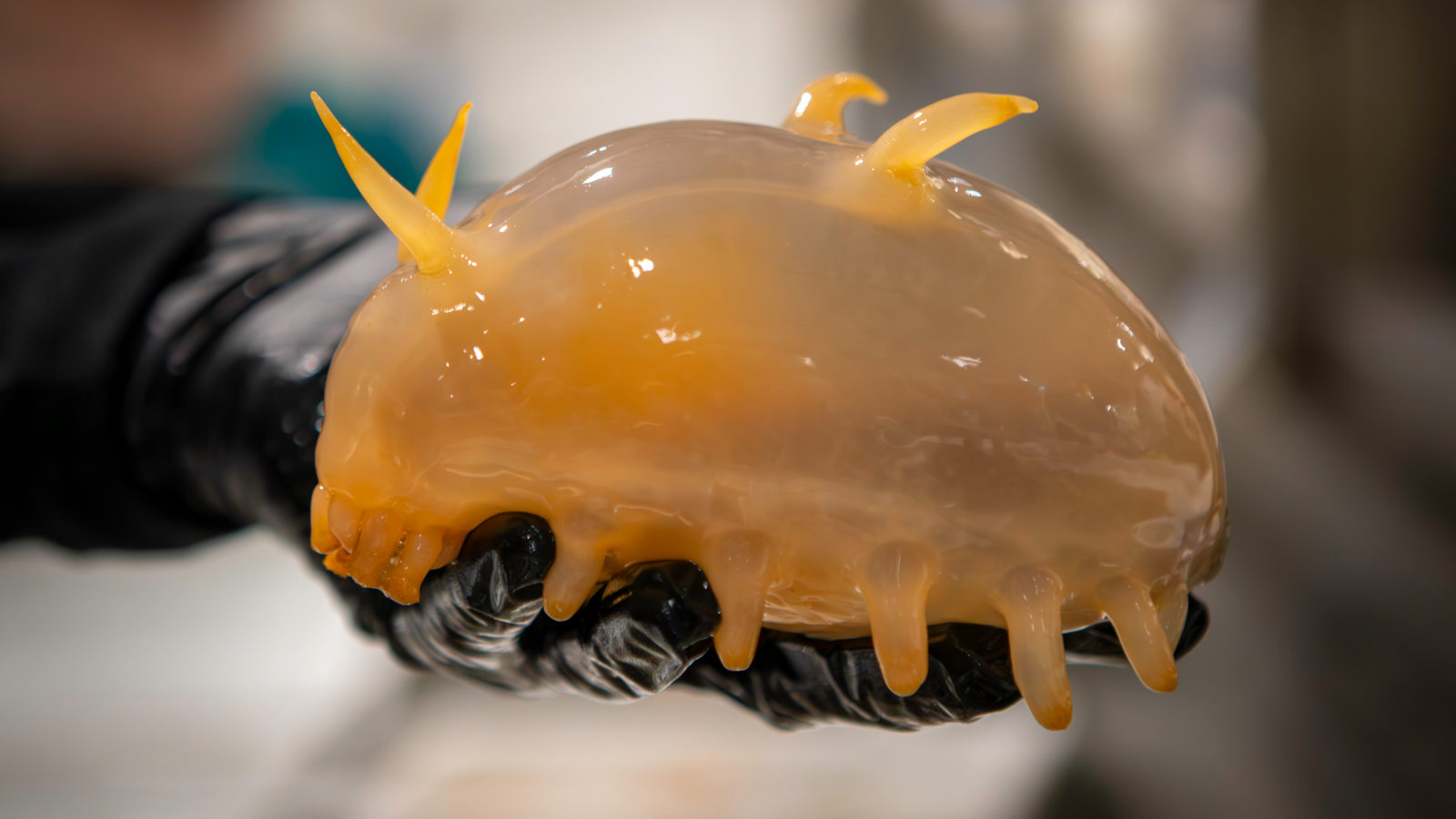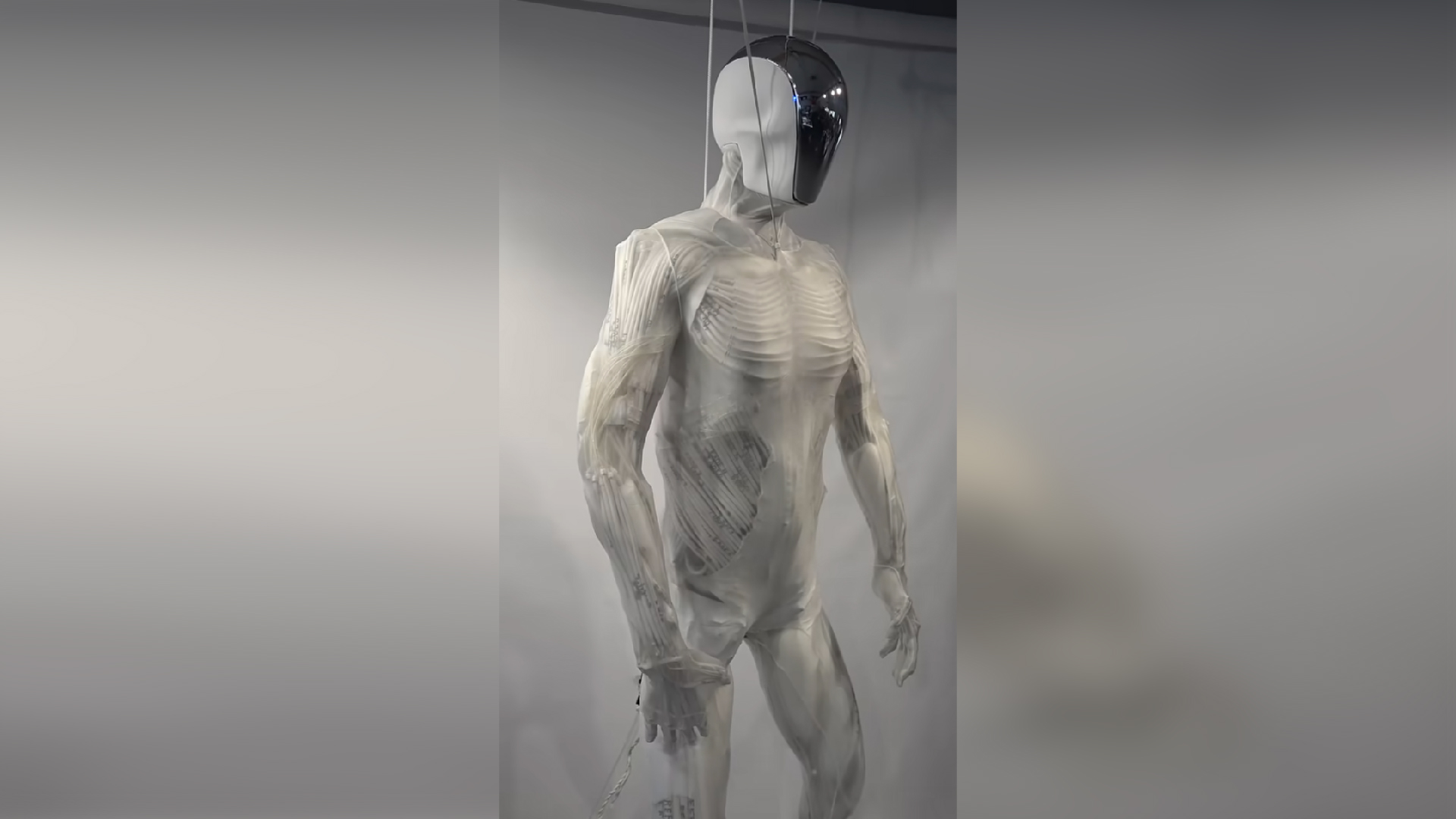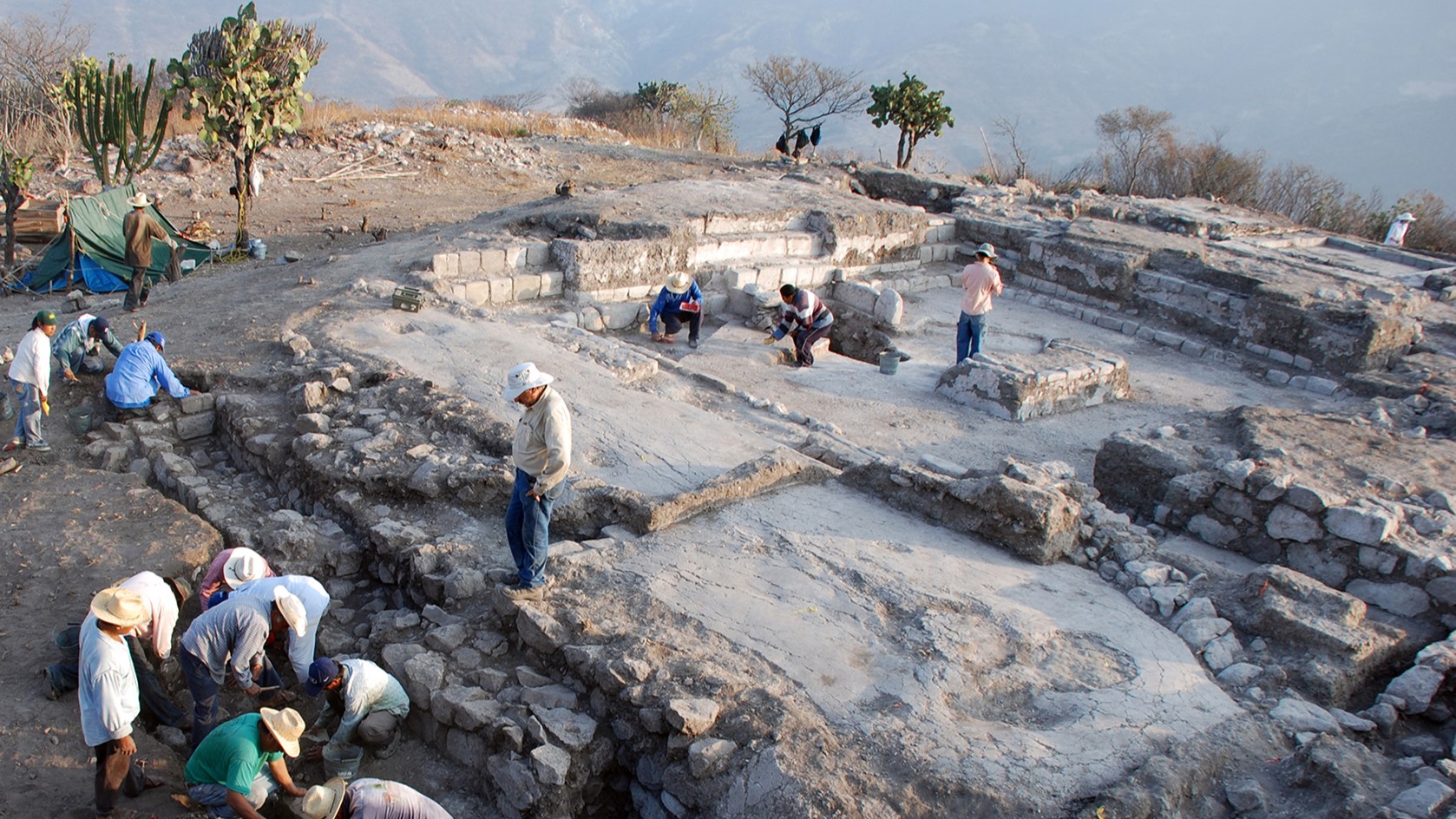Rare fresco discovered in Pompeii shows type of woman who 'breaks free from male order to dance freely, go hunting and eat raw meat in the mountains'
Archaeologists have brought to light an enormous fresco depicting a secretive cult practice in Pompeii.
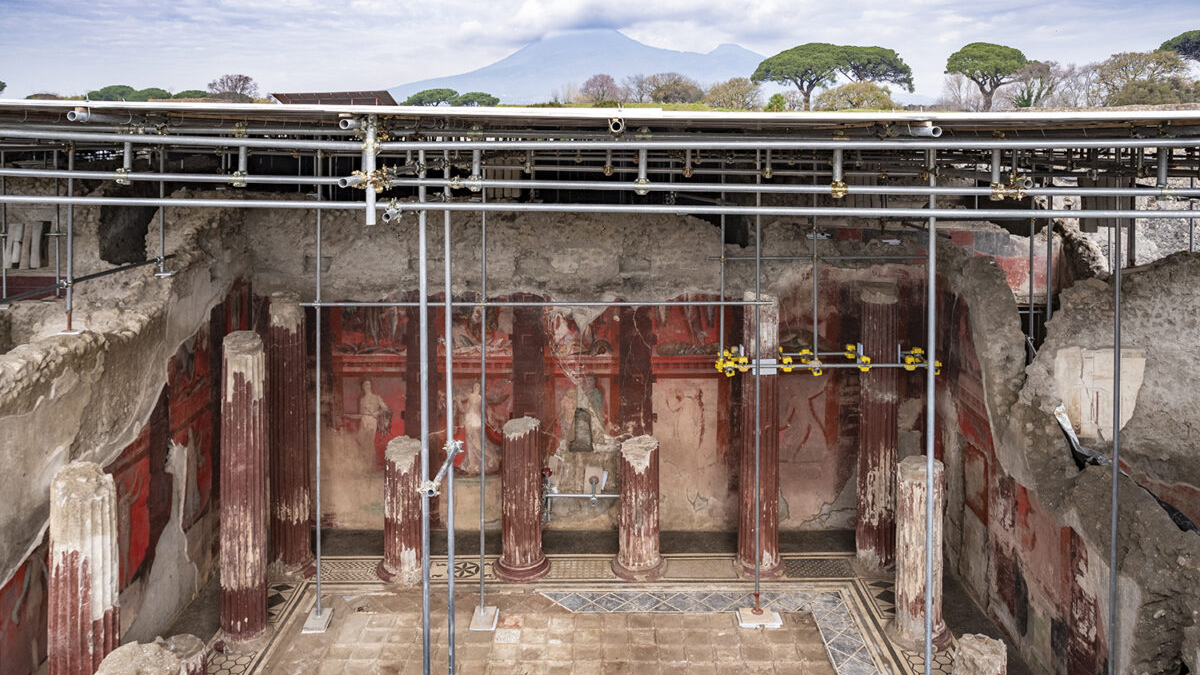
Archaeologists at Pompeii have discovered an enormous, extremely rare wall painting depicting an ancient mystery cult, at the center of which is a woman being initiated under the cover of night. The find was announced by the Pompeii Archaeological Park on Wednesday (Feb. 26) as they revealed the newly excavated House of Thiasus.
The wall painting, which is nearly life-size, runs the length of three walls along a large banquet hall, while the fourth wall opens onto a garden. Against a bright red background, there are numerous figures of maenads — female followers of Dionysus, the god of wine — who are depicted as hunters, carrying swords in their hands and slaughtered goats on their shoulders. The fresco also depicts young satyrs, part-goat and part-human creatures, playing the flute and performing a sacrifice of wine.
At the center of the fresco is an old satyr with a young woman who is about to be initiated into the Dionysian mystery cult. The ancient cult, which dates back at least to the classical Greeks of the fifth century B.C., is called a "mystery" because the initiation and practices were kept secret from outsiders. But the fresco has given experts a new clue to what went on in the rites: Roman initiates may have hunted like the Greek ones before them. The murals suggest these mystery rites echoed that ancient connection between Dionysus and wild animals.
Although many aspects of the Dionysian mysteries have been lost due to secrecy, historical accounts suggest that they involved heavy use of wine and other intoxicating substances, like opium, to induce trance-like states in followers. Dionysus was also known as a re-born god and became associated with resurrection, something that may have been promised to those initiated into the mysteries.
Related: Pompeii victims aren't who we thought they were, DNA analysis reveals
The only other example of a large fresco depicting the Dionysian rites was discovered in 1909 in a house in the suburbs of Pompeii known as the Villa of the Mysteries. These murals also depict satyrs, maenads and a woman being initiated into the cult in preparation for marriage, but they lack any hunting imagery.
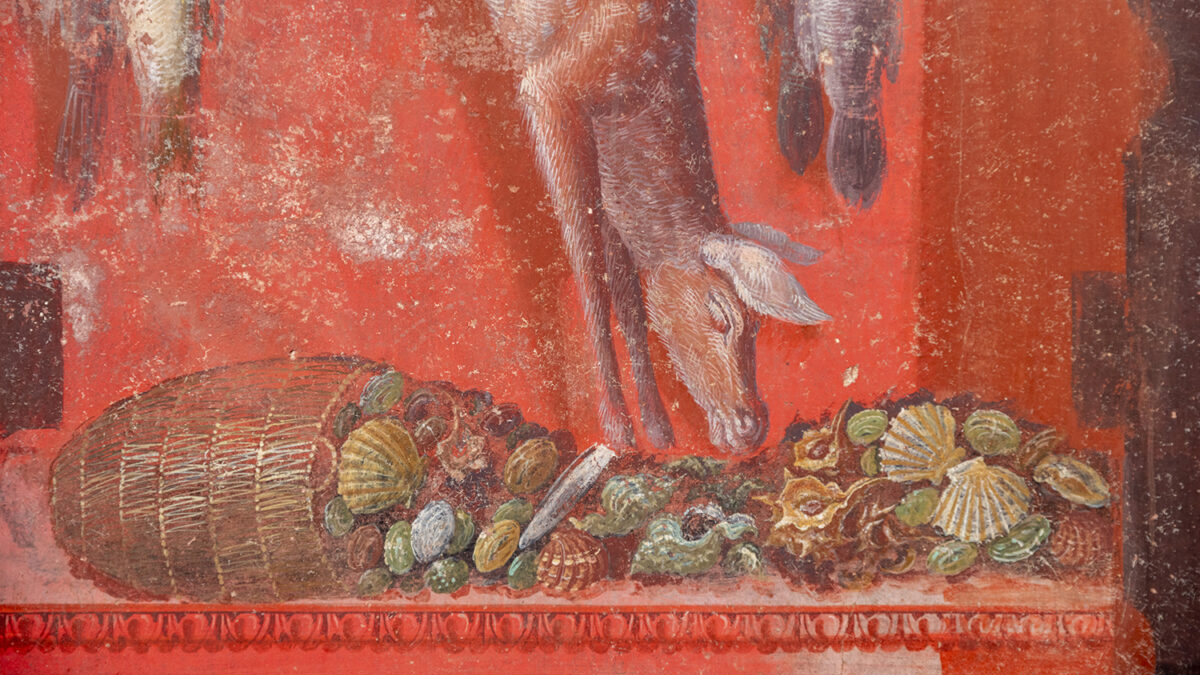
Both examples of Dionysus-themed frescoes, however, reveal the "wild, untameable side of women," Gabriel Zuchtriegel, the director of Pompeii Archaeological Park, said in the statement. This is the kind of woman who "breaks free from male order to dance freely, go hunting and eat raw meat in the mountains and the woods," he said.
Sign up for the Live Science daily newsletter now
Get the world’s most fascinating discoveries delivered straight to your inbox.
The murals of the Dionysian mysteries in both the Villa of the Mysteries and the newly discovered House of Thiasus date to the middle of the first century B.C., meaning they were over a century old when Mount Vesuvius erupted in A.D. 79, preserving the paintings for two millennia. They also suggest a growing religious crisis, Zuchtriegel said, as festivals celebrating Dionysus were ostensibly banned as part of a clamp down on secret rituals in Italy in 186 B.C. The two murals suggest that the ban was widely ignored — at least in the region.
"The discovery we are showing is historic," Italian Minister of Culture Alessandro Giuli said in the statement. The fresco "is an exceptional historical document and, together with the fresco of the Villa of the Mysteries, is one-of-a-kind, making Pompeii an extraordinary testament to an aspect of classical Mediterranean life that is largely unknown."
The House of Thiasus, named after the word for a group of Dionysian revelers, is now on display as part of the tours of the ongoing excavations at Pompeii.

Kristina Killgrove is a staff writer at Live Science with a focus on archaeology and paleoanthropology news. Her articles have also appeared in venues such as Forbes, Smithsonian, and Mental Floss. Killgrove holds postgraduate degrees in anthropology and classical archaeology and was formerly a university professor and researcher. She has received awards from the Society for American Archaeology and the American Anthropological Association for her science writing.
You must confirm your public display name before commenting
Please logout and then login again, you will then be prompted to enter your display name.
